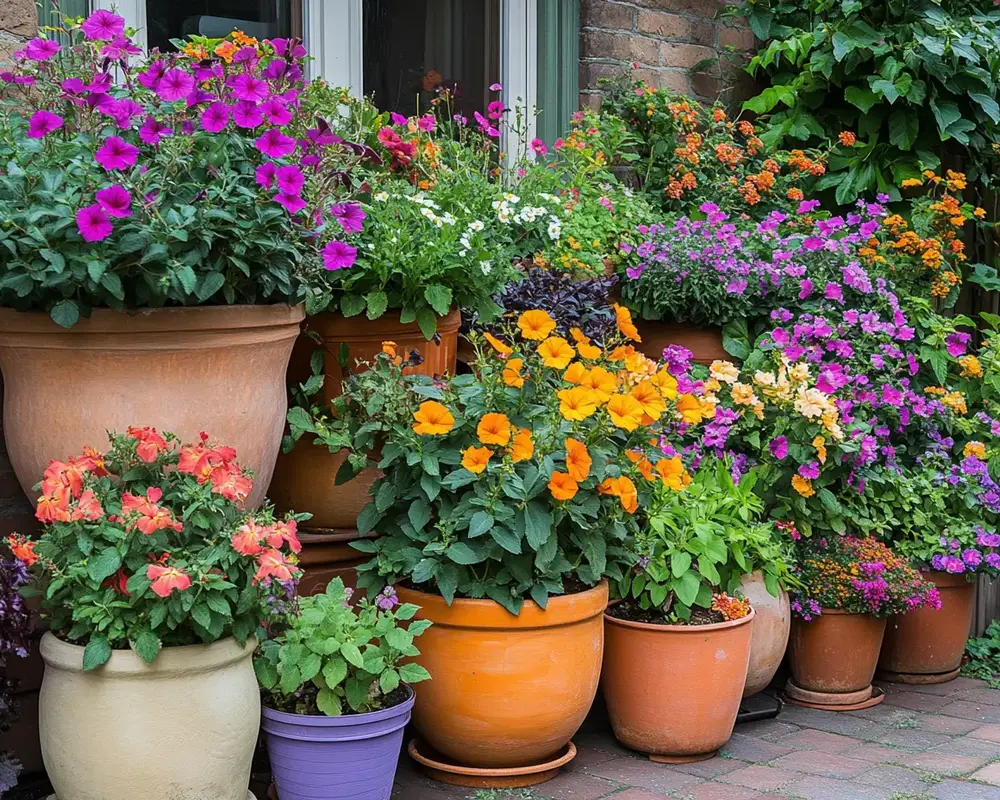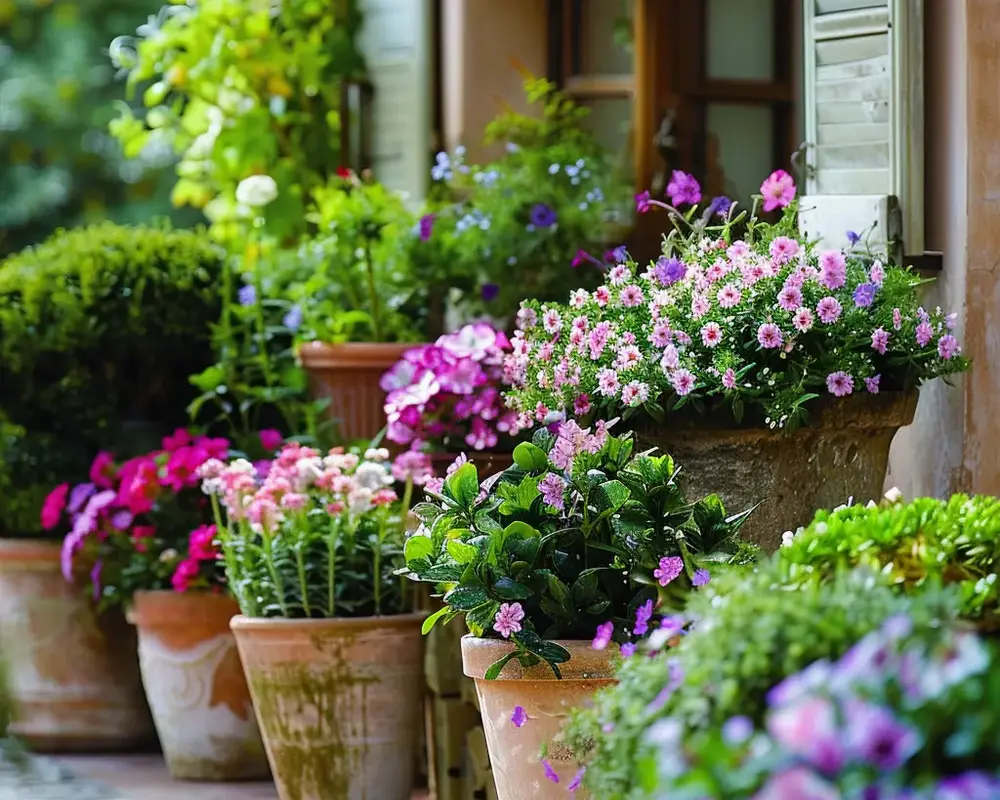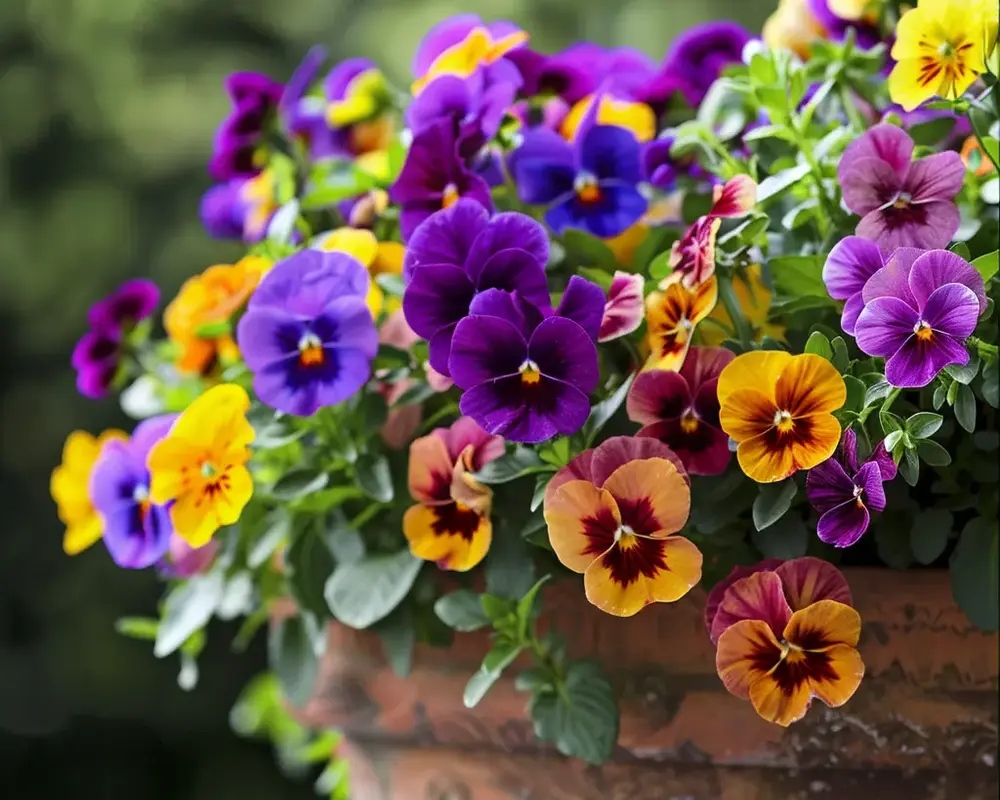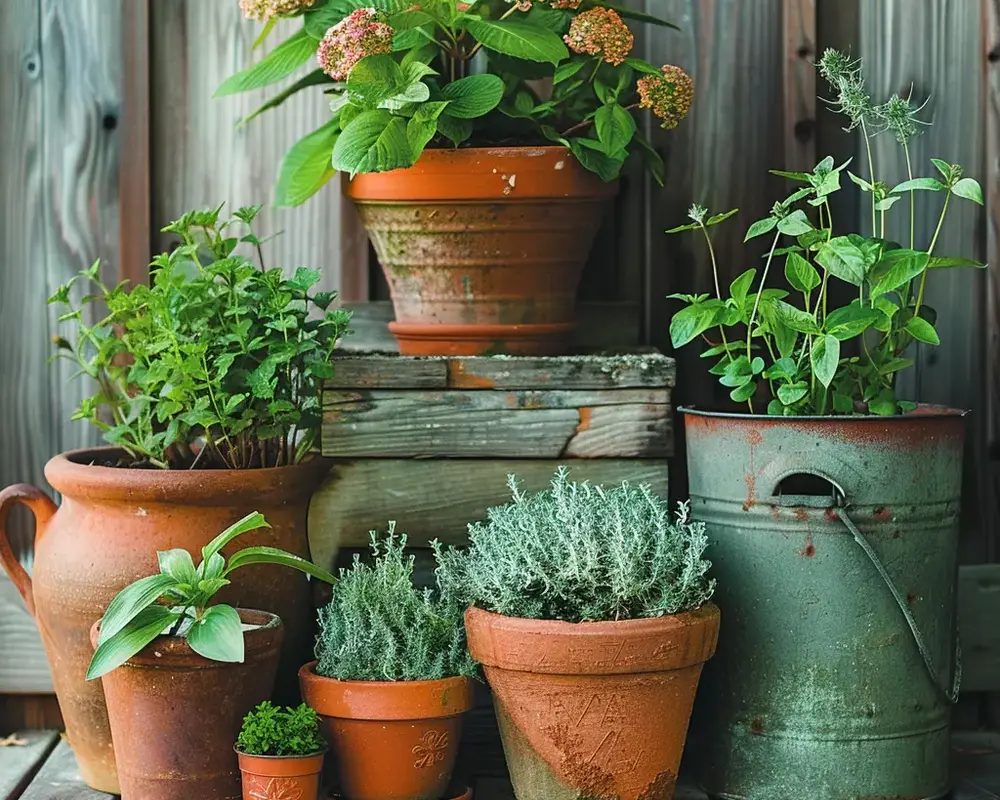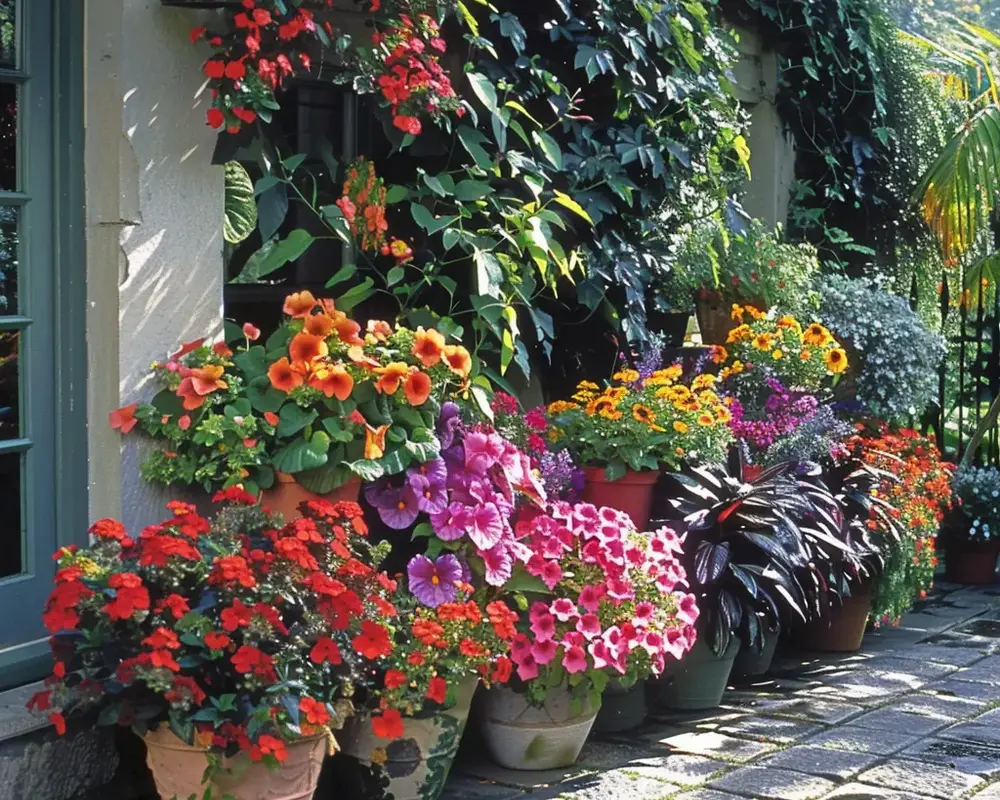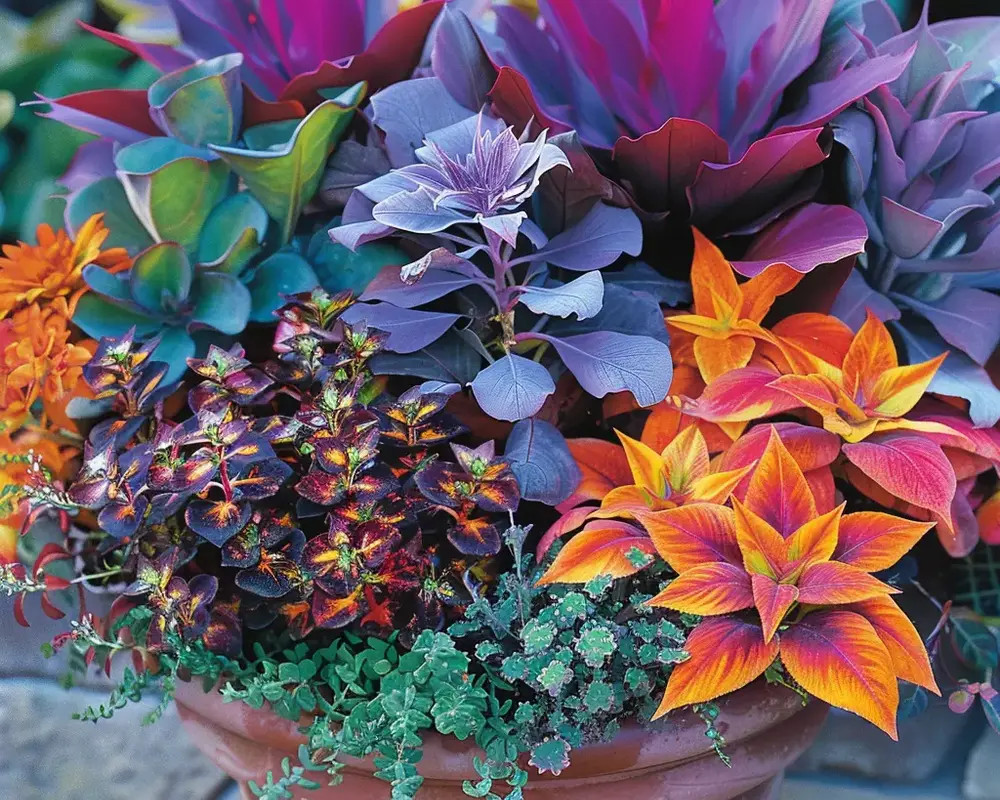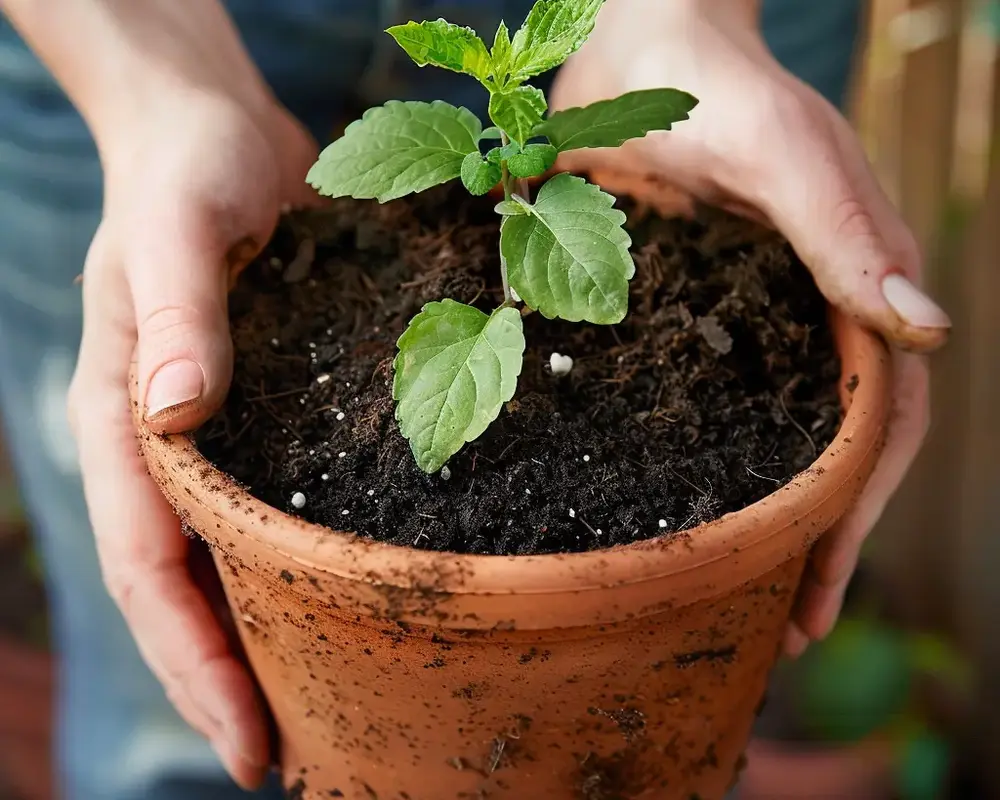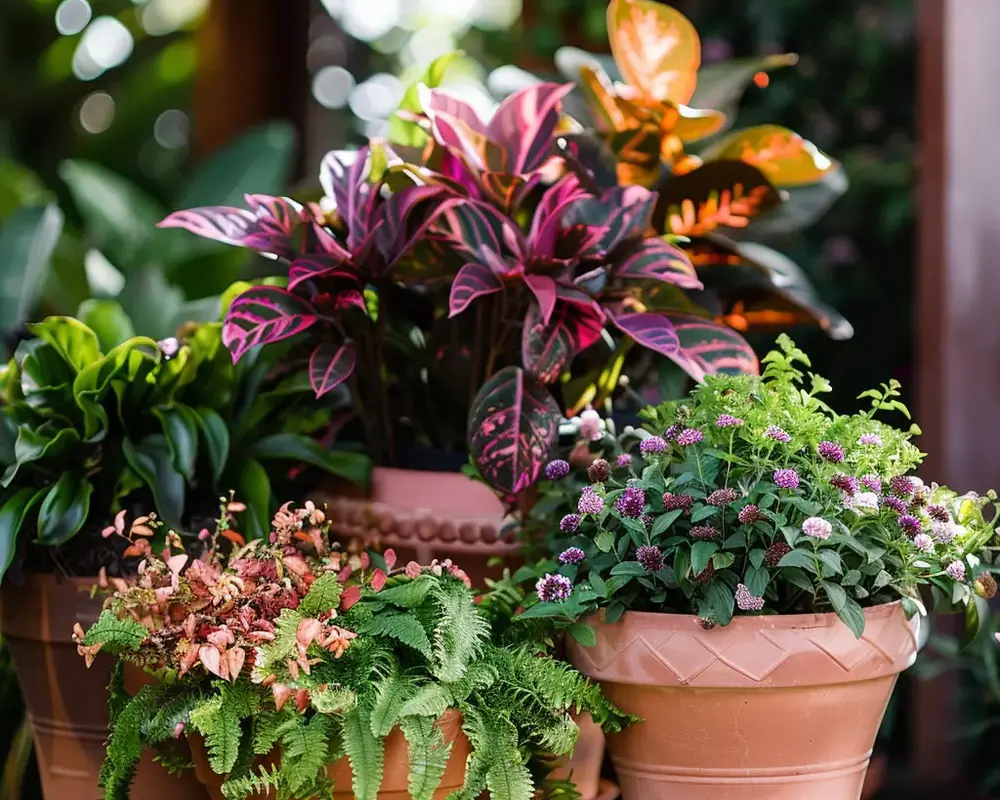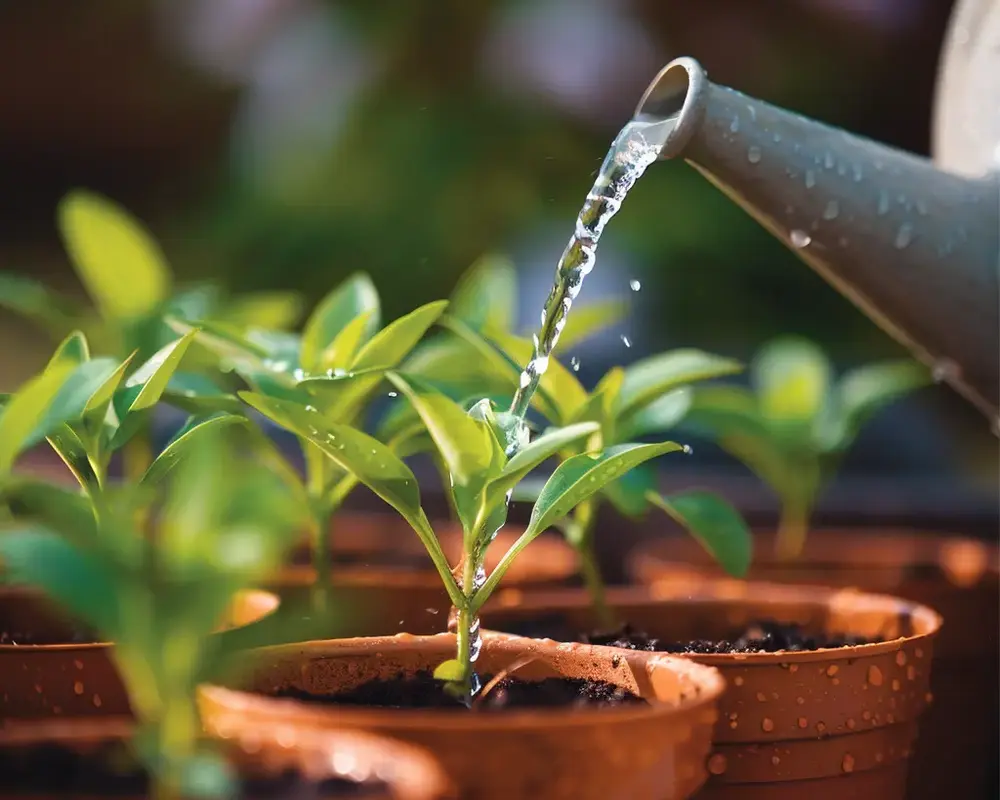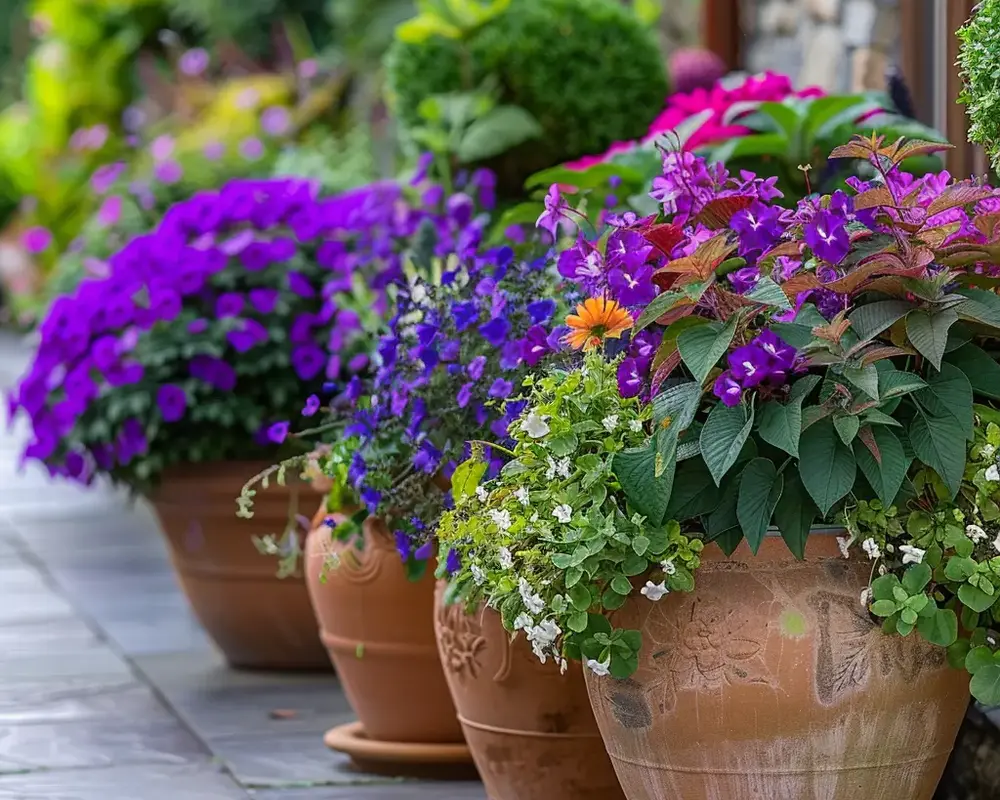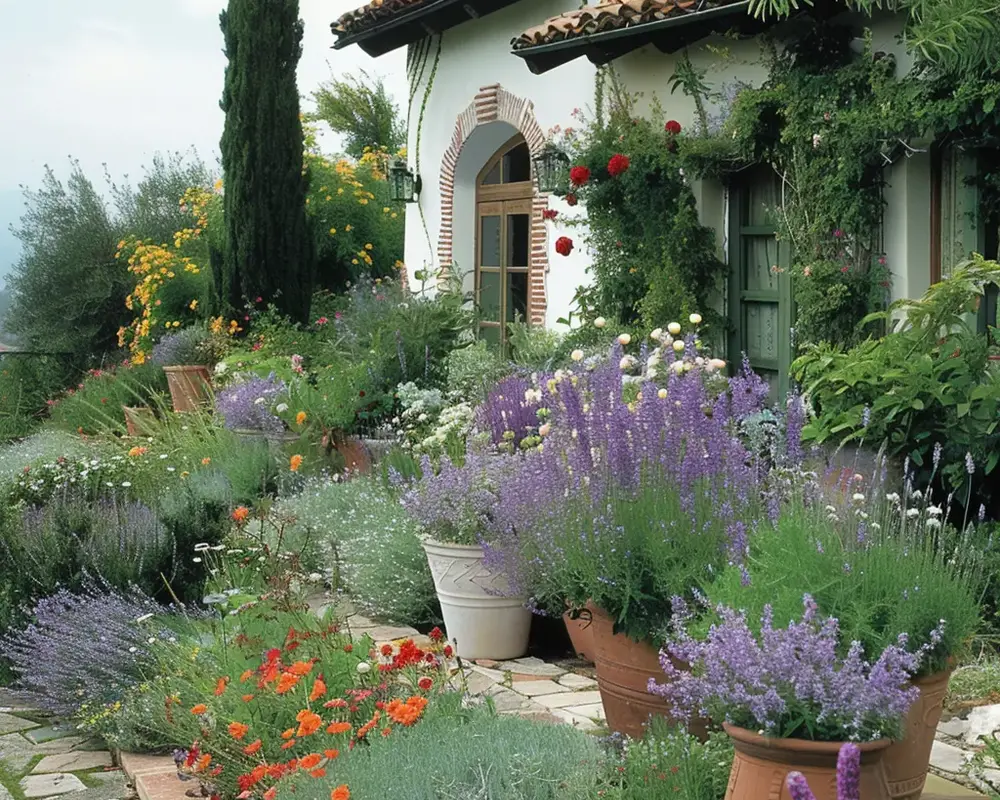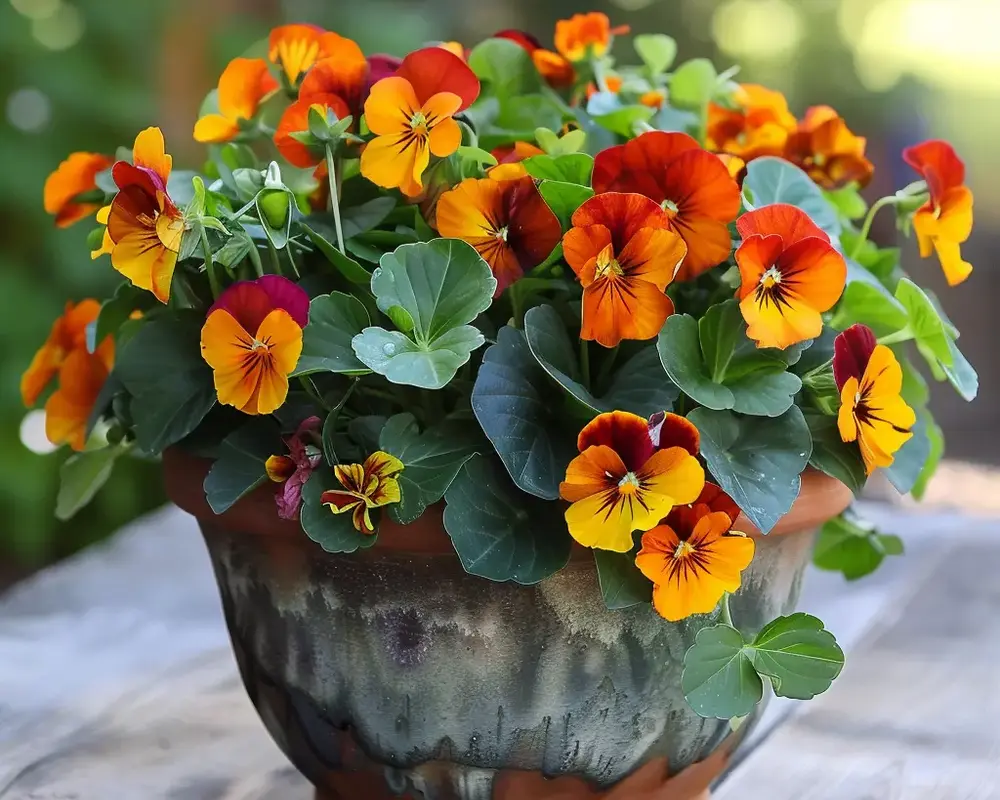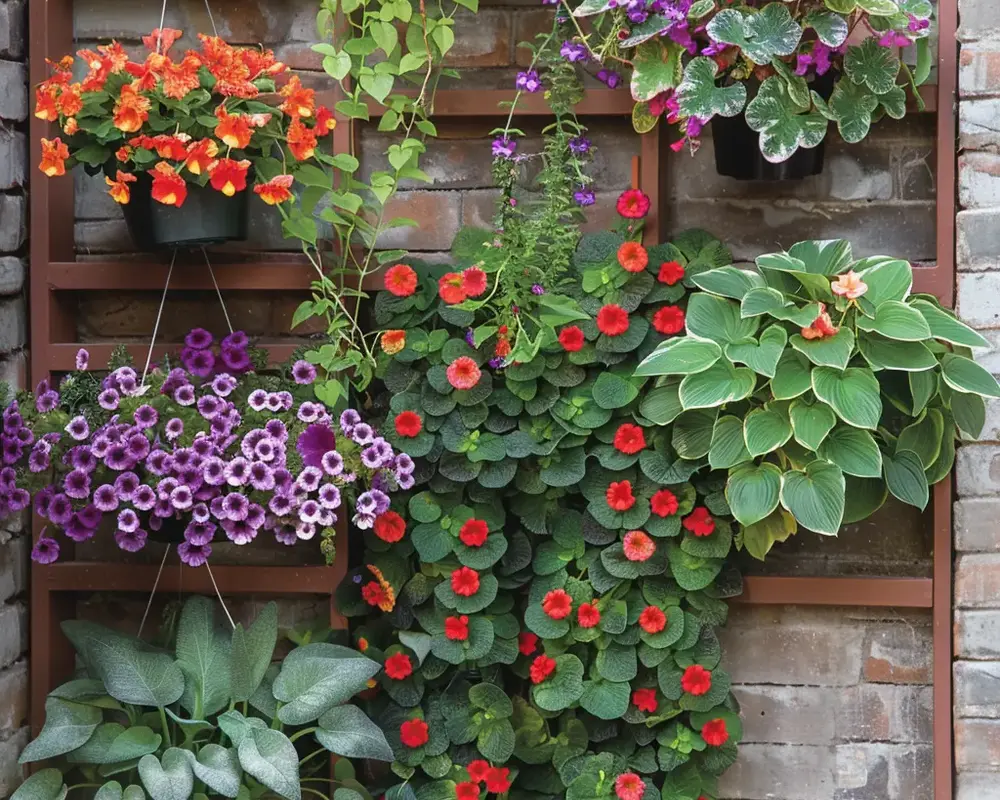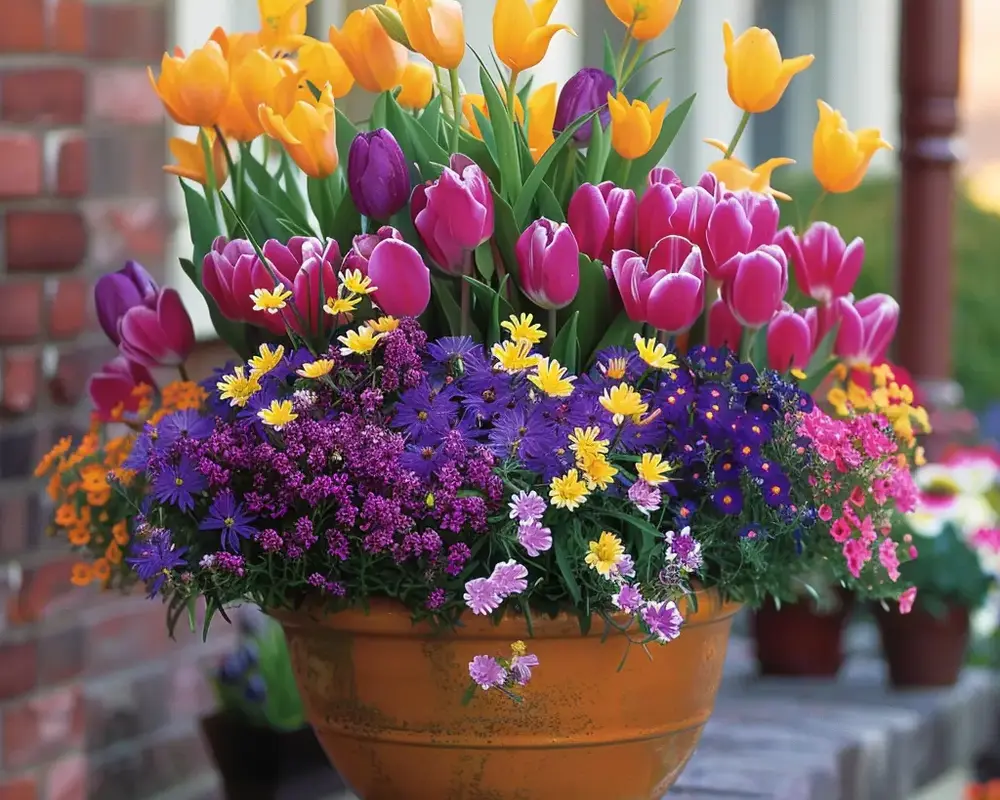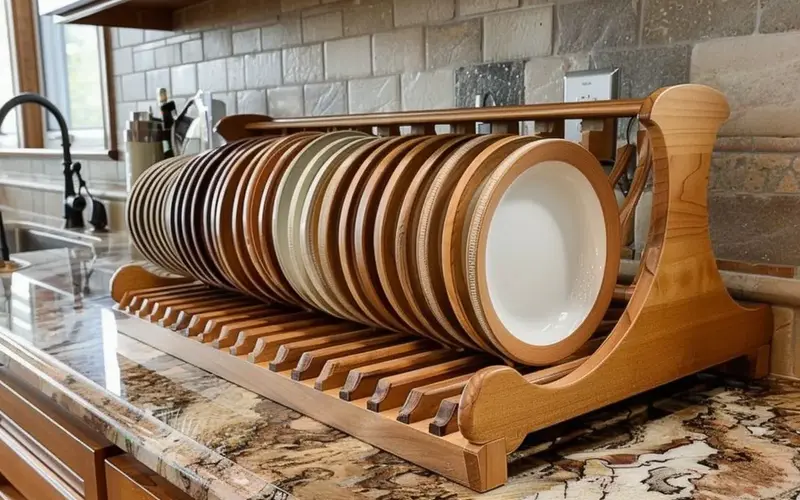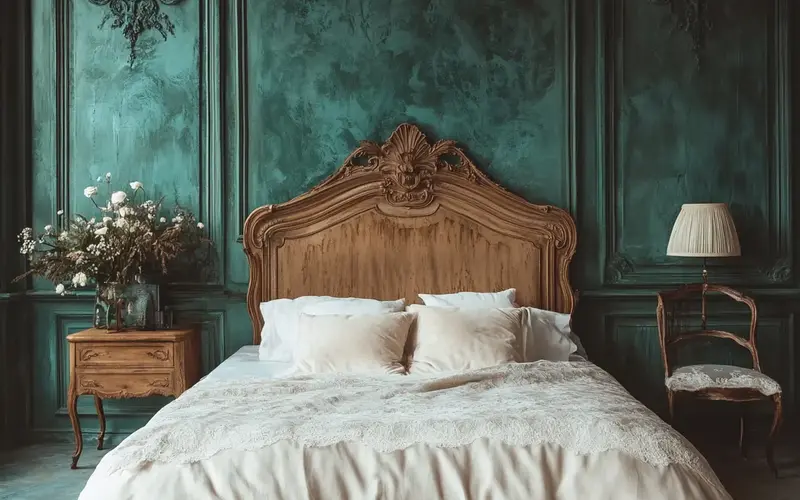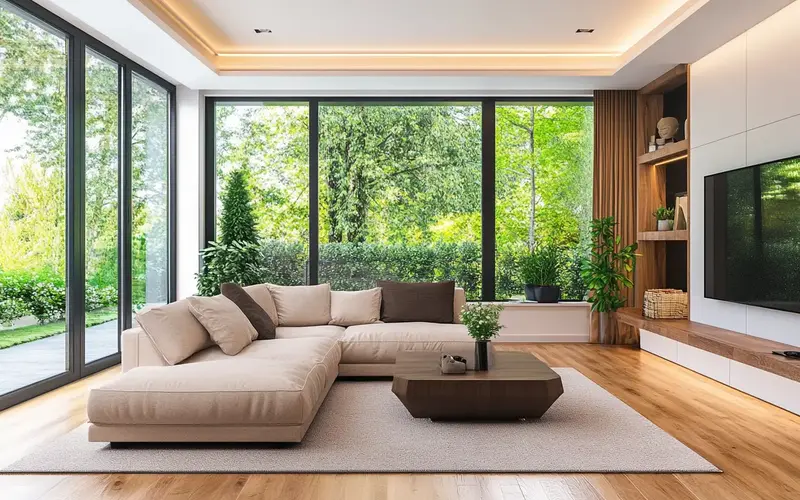Hey there, fellow plant enthusiasts! If you’re like me, you’ve probably caught yourself daydreaming about a vibrant garden overflowing with colorful blooms. But maybe, like me, you’re also limited on space or just looking for a simpler, more manageable way to cultivate your floral fantasies. Well, that’s where the magic of container gardening comes in!
The Allure of Container Gardening
Container gardening isn’t just a trend; it’s a practical and aesthetically pleasing solution that brings the joy of gardening to anyone, anywhere. Whether you have a sprawling backyard, a cozy balcony, or even a sunny windowsill, you can create a miniature garden oasis that’s all your own. And the best part? Container gardening is incredibly versatile. You can mix and match plants, colors, and textures to your heart’s content, creating unique displays that reflect your personal style.
Plus, container gardening is a space-saving miracle. You don’t need acres of land to cultivate a flourishing garden; a few well-chosen containers can transform even the smallest space into a vibrant haven. And let’s not forget the portability factor – if you’re a renter or someone who likes to rearrange their decor, container gardens are easy to move around, ensuring your plants always have the perfect spot to soak up the sun.
Read More: 21 Inspiring Vegetable Garden Design Ideas
Why Flowers Thrive in Containers?
Now, you might wonder, “Will my flowers really be happy in a container?” The answer is a resounding yes! In fact, flowers often thrive in containers because they offer a controlled environment where you can tailor the soil, water, and light conditions to suit your plant’s specific needs. This is especially beneficial for beginners who might be intimidated by the complexities of in-ground gardening.
But even seasoned gardeners love container gardening for the sheer convenience it offers. You can easily monitor your plants for pests and diseases without worrying about weeds competing for nutrients. It’s like giving your flowers VIP treatment, and they’ll reward you with bountiful blooms and lush foliage.
Read More: 17 Garden Ideas for Small Spaces and Maximum Yield
1. Planning Your Container Garden Oasis
Okay, now that we’re all aboard the container gardening train, let’s dive into the exciting part – designing your floral masterpiece! But before we start picking out pretty plants, there are a few essential planning steps to ensure your container garden thrives.
Choosing the Right Containers:
This is where the fun begins! Containers come in all shapes, sizes, and materials, allowing your creativity to run wild. But before you grab that adorable vintage watering can or repurpose an old dresser drawer, consider these factors:
Material Options:
Terracotta is classic, porous, and allows roots to breathe. However, it can dry out quickly, so keep an eye on the moisture levels. A great option is the Classic Terracotta Pot available on Amazon, which comes in various sizes to suit your needs.
Plastic: Lightweight, affordable, and retains moisture well. But it can get hot in the sun, so choose lighter colors or place them in shaded areas. The Self Watering Plastic Planter on Amazon is a fantastic choice for forgetful gardeners, as it helps regulate moisture levels.
Wood: Adds a rustic charm and naturally insulates roots. However, it can rot over time, so choose durable wood or line it with plastic. Check out the Elevated Cedar Wood Planter on Amazon for a stylish option.
Metal: It is modern and sleek, but it can also get hot and may require additional drainage holes. The Galvanized Steel Tub Planter on Amazon is a sturdy and stylish choice.
Size Matters: Match the container size to the root system of your chosen plants. Cramped roots can stunt growth and lead to unhealthy plants.
Drainage: Ensure your containers have drainage holes to prevent waterlogging, which can cause root rot. If your chosen container doesn’t have holes, you can easily drill some yourself or add a layer of gravel at the bottom to improve drainage.
Read More: Urban Gardening Solutions: Creating a Small Patio Veggie Garden
Selecting the Perfect Location:
Choosing the right spot for your container garden is crucial for its success. Consider the following:
Sunlight Requirements: Determine how much sun your chosen plants need. Most flowering plants prefer full sun (at least 6 hours of direct sunlight daily), but some thrive in partial or even full shade. Do your research to ensure your plants get the right amount of light.
Wind Protection: If you live in a windy area, protect your delicate plants by placing them in sheltered locations or using windbreaks.
Accessibility for Watering and Care: Ensure your container garden is easily accessible for watering, fertilizing, and other maintenance tasks. You don’t want to be lugging heavy containers around every time you need to water them!
In the next section, we’ll explore the nitty-gritty of plant selection and design. Get ready to unleash your inner garden artist!
Read More: Stunning Flower Bed Ideas for the Front of the House
2. Crafting Your Floral Masterpiece
Alright, now that you’ve got your containers and location sorted, it’s time for the fun part – choosing your floral stars! Think of this as casting the perfect ensemble for a Broadway show. Each plant has its own unique role to play in creating a visually stunning and harmonious display.
Choosing Your Floral Stars:
To create a well-balanced container garden, follow the “thriller, filler, spiller” formula:
Thriller Plants: These are your showstoppers – tall, eye-catching plants that anchor the design and add vertical interest. Think ornamental grasses like Purple Fountain Grass from Amazon, which adds a dramatic flair with its feathery plumes. Or go for a tropical vibe with Canna Lilies, which has vibrant red, orange, and yellow blooms.
Filler Plants: These mid-height, bushy plants fill the gaps and add volume to your arrangement. Petunias are a classic choice, available in a rainbow of colors and perfect for cascading over the edges of containers. Geraniums are another popular option, known for their vibrant blooms and drought tolerance. Try Coleus, which has a dazzling array of leaf colors and patterns for a unique twist.
Spiller Plants: These trailing plants soften the edges of your containers and create a sense of movement. Sweet potato vines are a versatile choice, with their heart-shaped leaves in shades of green, purple, or bronze. Verbena is another favorite, offering delicate blooms in a variety of colors. For a touch of whimsy, try Creeping Jenny, a low-growing plant with chartreuse foliage that spills gracefully over the sides of containers.
Read More: Amazing Herb Garden Ideas for Your Outdoor Oasis
Color Harmony and Texture Play:
When choosing your plants, consider color harmony. You can go for a monochromatic look with different shades of the same color or create a vibrant contrast with complementary colors (those opposite each other on the color wheel). Alternatively, you can opt for analogous colors (those next to each other on the color wheel) for a more harmonious look.
Don’t forget about texture! Mixing plants with different leaf shapes and sizes adds depth and interest to your container garden. Combine smooth, glossy leaves with feathery, fuzzy, or spiky foliage to create a dynamic display pleasing to the eye.
Read More: 21 Stunning Mediterranean Garden Ideas To Inspire You
3. Planting and Caring for Your Container Garden
Alright, my fellow green thumbs. We’ve assembled our dream team of plants, and now it’s time to get our hands dirty (the best part, if you ask me!). But before we start shoving those roots into the dirt, let’s talk about the foundation of a healthy container garden: the potting mix.
Potting Mix: The Goldilocks Zone for Roots
You wouldn’t bake a cake with just flour, right? Well, the same goes for your plants. Regular garden soil is too dense for containers, leading to poor drainage and unhappy roots. That’s why a good quality potting mix is essential. It’s like a perfectly balanced recipe for your plants, providing the ideal blend of nutrients, aeration, and water retention.
Think of it as the Goldilocks zone for roots—not too wet or dry, but just right. Look for a potting mix specifically formulated for containers. It should be lightweight and well-draining, with added nutrients to give your plants a boost.
A great option is the Miracle-Gro Potting Mix, enriched with Miracle-Gro Plant Food to feed your plants for up to 6 months. It’s available on Amazon in various sizes, so you can stock up and get planting!
Read More: How To Create a Magical DIY Fairy Garden for Your Backyard
Planting Techniques: Layering and Spacing
Now, let’s get those plants in their new homes! Start by filling your containers about two-thirds full with potting mix. Then, gently remove your plants from their nursery pots and loosen the roots a bit.
To create a layered look with your thriller, filler, and spiller plants, start by placing your thriller plant in the center (or back) of the container. Then, add your filler plants around it, ensuring they have enough space to grow. Finally, tuck your spiller plants along the edges, allowing them to cascade over the sides.
Spacing is key! Don’t overcrowd your plants; they need room to breathe and spread their roots. Check the plant tags or research online for the recommended spacing for each variety.
Read More: How To Create a Beautiful Rose Garden To Inspire You
Watering Wisely: The Thirsty Plant’s Best Friend
Watering is probably the most crucial (and sometimes trickiest) part of container gardening. Your plants need consistent moisture, but too much water can lead to root rot, and too little will leave them dehydrated. So, how do you find the sweet spot?
Check the soil moisture regularly. Stick your finger about an inch into the soil. If it feels dry, it’s time to water. You can also use a moisture meter, like the XLUX Soil Moisture Meter on Amazon, which gives you a precise moisture level reading.
Water deeply but infrequently. When you water, ensure the water soaks through the soil and out the drainage holes. Then, let the soil dry out slightly before watering again. This encourages deeper root growth and prevents waterlogging.
Water in the morning or evening. Avoid watering during the hottest part of the day, as the water can evaporate quickly and may even scorch your plants’ leaves.
Feeding Your Flowers: A Little Boost Goes a Long Way
Just like us, plants need food to thrive! Container plants, in particular, need a little extra help because their nutrients get depleted faster in a limited space. You can choose from two main types of fertilizers:
Liquid fertilizer: This is easy to apply and gives your plants a quick nutrient boost. The Miracle-Gro LiquaFeed Tomato, Vegetable & Herb Plant Food is a popular choice and can be easily found on Amazon.
Slow-release fertilizer: This type of fertilizer releases nutrients gradually over time, so you don’t have to fertilize as often. Osmocote Smart-Release Plant Food is a great option available on Amazon and provides continuous feeding for up to 4 months.
Follow the fertilizing schedule on the fertilizer package. During the growing season, you should generally fertilize your plants every few weeks.
Maintenance Tips: Keeping Your Garden Gorgeous
A little maintenance is required to keep your container garden looking its best. But don’t worry—it’s not rocket science!
Deadheading: Remove spent blooms to encourage your plants to produce more flowers. Simply snip off the faded flower heads with a pair of pruners or scissors. The Fiskars Micro-Tip Pruning Snip is an excellent tool for this task and is available on Amazon.
Pruning: Some plants may need occasional pruning to maintain shape or control their growth. This is especially true for vining or sprawling plants.
Pest and disease prevention: Look for and treat pests and diseases promptly. To control pests, you can use insecticidal soap or neem oil; to treat diseases, you can use fungicides. Always follow the instructions on the product label carefully.
Now, let’s move on to the final section, where we’ll explore some inspiring container gardening ideas and themes. Get ready to unleash your creativity and design a garden that reflects your unique style!
4. Container Gardening Inspiration and Ideas
Get ready to be inspired! Container gardening offers endless possibilities for creating stunning displays that suit your personal taste and space. Whether you’re a fan of classic charm, modern minimalism, or something in between, there’s a container garden theme for everyone.
Theme Gardens:
Cottage Garden Charm: Create a whimsical and romantic atmosphere with a mix of colorful flowers like lavender, roses, and hollyhocks. Add a touch of vintage charm with weathered containers and rustic accents.
Mediterranean Oasis: Transport yourself to the sun-drenched shores of the Mediterranean with a collection of drought-tolerant plants like olive trees, lavender, and ** rosemary**. Choose terracotta or ceramic containers for an authentic look.
Modern Minimalist Design: Keep it sleek and simple with a minimalist container garden. Choose neutral-color geometric containers and plant with architectural plants like succulents, grasses, and ferns.
Edible Flower Containers:
Why just admire your flowers when you can eat them, too? Create a beautiful and delicious edible flower container garden with plants like nasturtiums, pansies, and calendula. These edible blooms add flavor and color to salads, desserts, and cocktails.
Vertical Container Gardens:
Short on space? No problem! Vertical container gardens are a great way to maximize your growing area. You can use hanging baskets, wall-mounted planters, or even repurpose old ladders or pallets to create a vertical oasis. Choose cascading plants like petunias, verbena, and trailing succulents to create a dramatic effect.
Seasonal Container Gardens:
Change up your container garden throughout the year to enjoy a continuous display of blooms. In spring, plant tulips, daffodils, and hyacinths for a burst of color. Switch to summer annuals like petunias, zinnias, and marigolds as the weather warms up. Plant mums, asters, and pansies in fall to warm and cheer your space.
Final Thoughts
Congratulations, you’ve reached the end of our container gardening journey! I hope you’re feeling inspired and ready to create your own floral masterpiece. Remember, container gardening is about having fun, experimenting, and expressing creativity. Don’t be afraid to try new things, mix and match plants, and let your garden reflect your unique personality.
So, grab those gardening gloves, pick out some beautiful plants, and get ready to enjoy the beauty and rewards of container gardening. Your flowers will thank you, and so will your soul!
